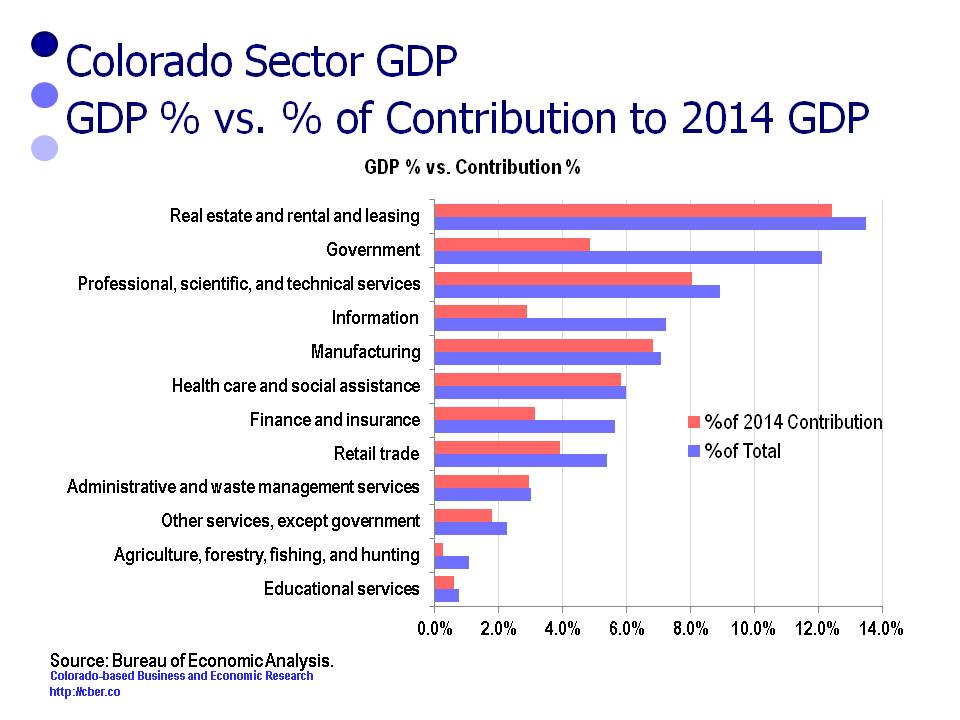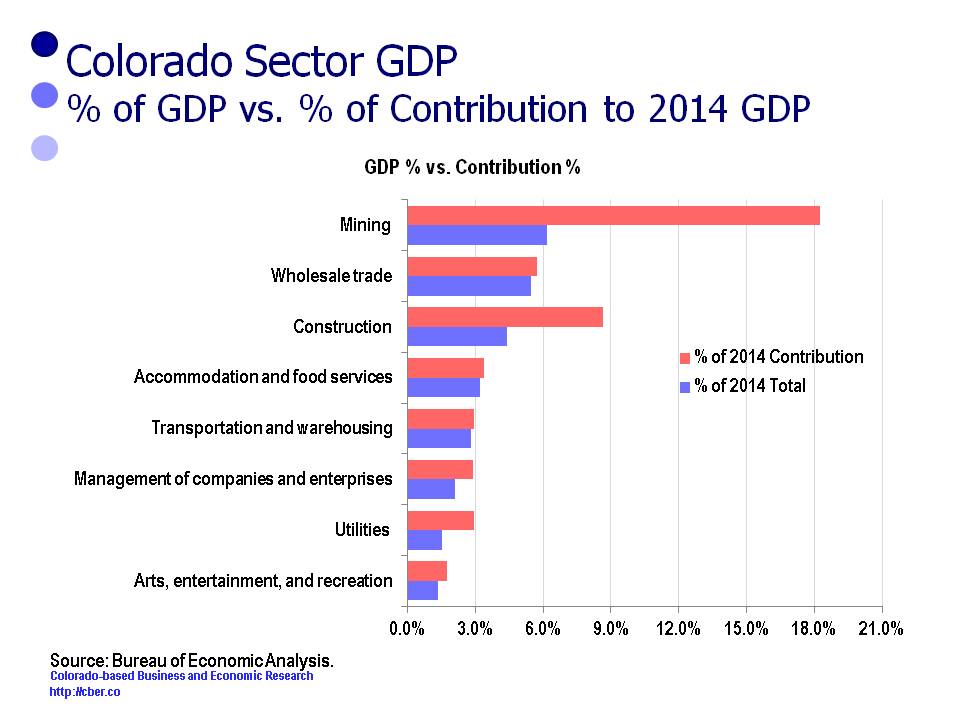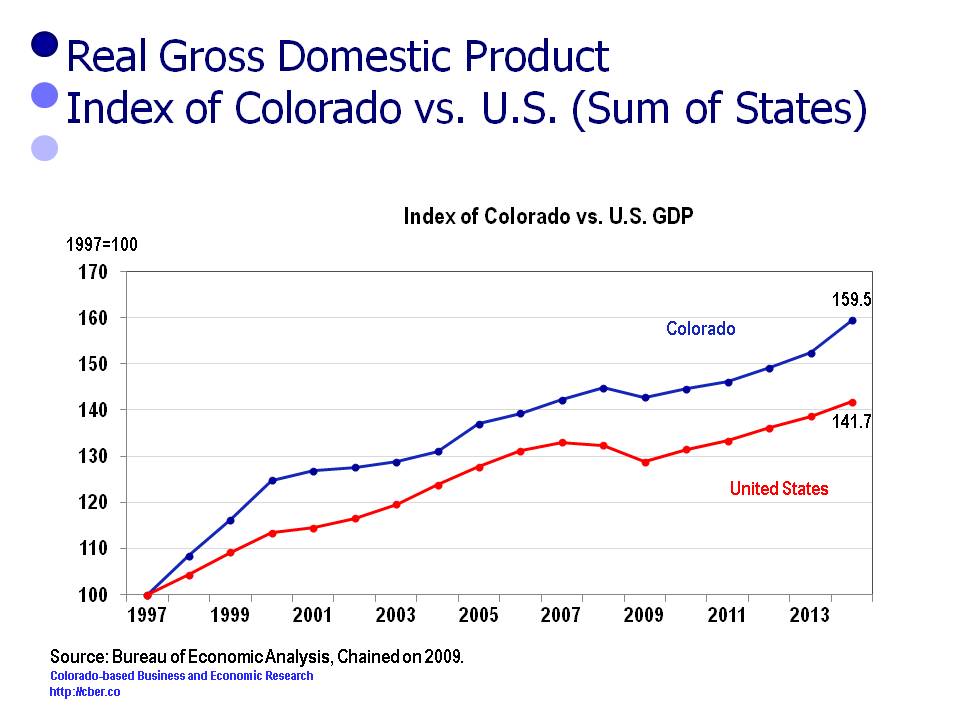On December 22nd, the Bureau of Economic Analysis released the “third estimate” of the Q3 2015 Real GDP for the United States. It increased at an annualized rate of 2.0% compared to 3.9% for Q2.
The nominal or current-dollar GDP (chained on 2009) for Q3 increased by $146.5 billion to $18,060.2 billion, a gain of 3.3%. The Q2 current-dollar GDP rose by 6.1% or $264.4 billion.
|
2015 Real GDP, Chained Dollars (2009 Billions) |
|||
|
Q1 |
Q2 |
Q3 |
|
| Gross domestic product |
$16,177 |
$16,334 |
$16,414 |
| Personal consumption expenditures |
$11,081 |
$11,179 |
$11,262 |
| Goods |
$3,804 |
$3,855 |
$3,902 |
| Services |
$7,277 |
$7,325 |
$7,363 |
| Gross private domestic investment |
$2,830 |
$2,865 |
$2,860 |
| Fixed investment |
$2,701 |
$2,736 |
$2,761 |
| Nonresidential |
$2,189 |
$2,211 |
$2,225 |
| Residential |
$512 |
$524 |
$534 |
| Change in private inventories |
$113 |
$114 |
$86 |
| Net exports of goods and services |
$(541) |
$(535) |
$(546) |
| Exports |
$2,091 |
$2,118 |
$2,121 |
| Goods |
$1,429 |
$1,452 |
$1,449 |
| Services |
$661 |
$664 |
$671 |
| Imports |
$2,633 |
$2,652 |
$2,667 |
| Goods |
$2,161 |
$2,178 |
$2,186 |
| Services |
$470 |
$472 |
$480 |
| Government consumption expenditures |
$2,839 |
$2,857 |
$2,870 |
| Federal |
$1,111 |
$1,111 |
$1,112 |
| National defense |
$680 |
$681 |
$678 |
| Nondefense |
$431 |
$430 |
$433 |
| State and local |
$1,726 |
$1,744 |
$1,756 |
| Residual |
$(41) |
$(45) |
$(49) |
The 2015 Q3 Real GDP posted gains in the following areas:
• Personal consumption expenditures, the largest category, were up by 3.0% compared to 3.6% in the previous quarter. Goods were up 5.0% and Services were up 2.1%.
• Fixed investments posted a gain of 3.7% in Q3, down from 5.2% in Q2. Nonresidential investments for Q3 were up 2.6% and residential investments rose 8.2%. Both had lower levels of growth than Q2.
• Exports posted a gain of 0.7% for Q3 compared to 5.1% in Q2. Goods actually declined by -0.9% while services increased by 3.9%.
• Imports recorded an increase of 2.3% in Q3 compared to 3.0% in Q2. Goods increased by 2.3% while services posted a 6.4% increase. (Note: Imports are subtracted from the value of the GDP).
• Government consumption increased by 1.8% in Q3 compared to 2.6% in Q2. Federal spending was flat with a decrease in national defense spending and an increase in Nondefense spending. State and local government spending posted a 2.8% gain, down from 4.3% in the prior quarter.
|
Percent Change From Preceding Period in Real GDP – Seasonally Adjusted at Annualized Rates |
|||
| Q1 | Q2 | Q3 | |
| Gross domestic product | 0.6 | 3.9 | 2.0 |
| Personal consumption expenditures | 1.8 | 3.6 | 3.0 |
| Goods | 1.1 | 5.5 | 5.0 |
| Services | 2.1 | 2.7 | 2.1 |
| Gross private domestic investment | 8.6 | 5.0 | -0.7 |
| Fixed investment | 3.3 | 5.2 | 3.7 |
| Nonresidential | 1.6 | 4.1 | 2.6 |
| Structures | -7.4 | 6.2 | -7.2 |
| Equipment | 2.3 | 0.3 | 9.9 |
| Intellectual property products | 7.4 | 8.3 | -0.8 |
| Residential | 10.1 | 9.3 | 8.2 |
| Change in private inventories | — | — | — |
| Net exports of goods and services | — | — | — |
| Exports | -6.0 | 5.1 | 0.7 |
| Goods | -11.7 | 6.5 | -0.9 |
| Services | 7.3 | 2.3 | 3.9 |
| Imports | 7.1 | 3.0 | 2.3 |
| Goods | 7.2 | 3.2 | 1.4 |
| Services | 6.7 | 2.0 | 6.4 |
| Government consumption expenditures | -0.1 | 2.6 | 1.8 |
| Federal | 1.1 | 0.0 | 0.2 |
| National defense | 1.0 | 0.3 | -1.4 |
| Nondefense | 1.2 | -0.5 | 2.8 |
| State and local | -0.8 | 4.3 | 2.8 |
| Addendum: | |||
| Gross domestic product, current dollars | 0.8 | 6.1 | 3.3 |
Q4 2015 Real GDP is expected to be stronger than Q3 and the rate of growth for 2015 will be in the range of 2.3% to 2.5%.


